Food, wine plus extraordinary undiscovered treasures in the heart of Italy
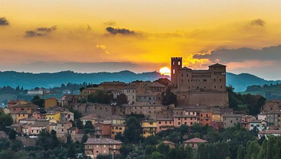
Lovely Longiano
The historic via Emilia leads you into a fabulous and largely undiscovered world of hilltop castles, vineyards and fruit groves, astonishing cities of art, superb food, and warm hospitality.
Here is just a fraction of the cornucopia that is Romagna.
The art cities of the Via Emilia…
When the Romans built their new city by-the-sea Ariminum, today’s Rimini, and conquered Cisalpine Gaul (the part of Italy below the Alps), they naturally built a road through it. This great road – the Via Emilia was created 183 years before Christianity and named after Marcus Aemilius Lepidus. This massive construction work ran some 176 Roman miles (200 kilometers or 125 miles) from Rimini to Piacenza – just outside Milan.

Serene Cesena
The road follows the course of the Apennines, with foothills and mountains on one side and an enormous fertile plain watered by the Po on the other.
This is a very powerful route and even today the Via Emilia is in constant use – the Strada Statale 9 follows the original course and the Autostrada and the high speed train line run parallel to it.
Traders and merchants, robber barons, politicians and aristocrats, soldiers and governors, armies of mercenaries and spies have followed the route over the last two millennia creating great wealth and great cities of art and of riches on their way.
And the Via Emilia still holds some interesting secrets. Up to the half way mark of the road at Bologna the cities of the Via Emilia – Parma, Modena, Bologna itself and Reggio Emilia – are quite well known. But prepare yourself for the Romagna part, many of the cities are relatively unknown and just as wonderful as the others but with one hidden extra – no tourists!

Stunningly photogenic Dozza
Ever heard of Dozza? It’s the first city you encounter on the Via Emilia after Bologna. Dozza is both beautiful and unspoiled, this city of art is perched on a hilltop surrounded by vineyards. It has a very impressive castle – Caterina Sforza built it she was the very cultured illegitimate daughter of the Duke of Milan. Anyway now her castle hosts the wine library of the whole of Emilia Romagna state. And just like Venice, Dozza has its own Bienale – a living one, of its painted walls. Every two years Dozza’s walls are painted with glorious and thought-provoking works of art. And they stay up for decades for everyone to enjoy.
One of the next cities is Faenza . Now a beautiful and cultured city it was very famous indeed in the 16th century when just about every court in Europe had to have some of the glazed majolica known as Faience wear. It the Faenza inhabitants quite a long time to reach this level of perfection as the first pottery was produced in the city in the 1st century BC. All this pottery and the great Via Emilia brought great wealth and there are stunningly beautiful piazzas and superb buildings everywhere. Still there are many artisan ceramicists in Faenza where the enormous international ceramics fair is held every year.
Cesena is a superb little town with at least three jewels in its crown – the Malatesta Library – the first public library in the world, the soaring Rocca castle just by the main piazza, and the piazza itself said to be the most delightful in Europe, maybe the world! Plus this is a most serene and delightful and welcoming town you’ll ever visit – the Pope thought so, he came in September 2017!
A little further down the Via Emilia you’ll happen on Santarcangelo di Romagna Packed full of history and good food, Slow City Santarcangelo is set on top of its own big hill with an enormous medieval castle. It is an absolute jewel, not only does it abound with lovely buildings, superb food and wine but glorious festivals too. The people of Santarcangelo are a fun-loving lot and they started their main festival over a thousand years ago – the Festa di Sant Martino (also known as the Festa of Cuckolds) in November it crams the city with simply everything – food and wine and music (obviously) there are hundreds and hundreds of stalls.

A more modern festival, the Festa di San Michele is only 645 years old. Known locally as the Bird Fair it packs them in at the beginning of October. Pretty much everyone in Santarcangelo has a balcony and for one weekend in May they are particularly splendid – the festival of ‘Balconies in Bloom’! And it didn’t deter the residents of Santarcangelo that such a big, historic and important place didn’t have a posh theater. They started to hold the International Theater in Piazzas Festival in 1971 and it has grown from there into a two week glorious celebration of theatre all over the atmospheric city. In July Santarcangelo simply becomes a city-theater!
And finally you’ll come to the seaside and Rimini – which is actually two cities. In the 1960’s Rimini’s 15 kilometers of beaches became the largest and most happening lido in Europe. There still are some 150,000 hotel beds plus 750 bars, 300 restaurants, 70 dance halls and no less than 14 miniature golf courses.
Lucky for Rimini’s historical credentials that the sea and the beaches moved away from the main – Roman – city which is totally glorious and very elegant. Possibly much like it was when it was constructed as a ‘New’ Roman town – Ariminum. Even now you can take a walk in time across the Tiberius Bridge, through the beautiful central square and to the Arch of Augustus.
And Rimini has much more, two thousand years of history at the end (or the beginning) of the Via Emilia has given it great art and architecture to add to its Roman heritage. Once it was the headquarters of the Malatesta family many of whom left their legacy in castles and churches such as the 15th century Malatesta temple and Sigismond’s castle, both crammed full of wonderful art.
And the vineyards of Romagna

Villa Venti
One of Romagna’s great joys is its superb vineyards – there are simply superb – and so they should be – the region has been producing great wines for over 2 millennia. And there are hundreds of them.
Great local wines range from the robust Sangiovese DOC, through delicate whites such as Albana DOCG, Trebbiano,, Pagadebit, Famoso, and the superb late-harvest sweet reds and whites.

Cantina Zuffa is close to Dozza, another organic vineyard that produces wine so good that they were invited to Italy’s 2015 World Exhibition to bring their great Sangiovese DOC wines. Naturally they have many more – including Albana passito’s and some superb sparkling wines.
Villa Venti is a family organic vineyard set up on biodynamic principles in the hills of Longiano which produces Slow Wine offers of Sangiovese DOC wines, late harvest sweet Sangioveses, and Famoso white wines in a sensational location
Fattoria Paradiso is the historic and beautiful Romagna vineyard on the hills of Bertinoro. It produces wonderful wines from superb vineyards. They include Sangiovesa DOC (of course), Cagnina (sweet red wine), Pagadebit and Trebbiano (dry whites) and superb Albana DOCG’s (dry and late-harvest sweet), their own Barbarossa and loads more.
Plus great (and inexpensive) astonishingly good food…

Tagliatelli with fresh seasonal porcini mushrooms
Romagna has a wealth of sensationally good produce here are just 10 of its fabulous foods to whet your appetite:
- Freshly made pasta. Forget the packaged variety (or the mass-produced chilled version). In Romagna there is only one way to make pasta – flour, water, egg + a large wooden table + a big rolling pin + a knife. This is how you make tasty, firm, toothsome Tagliatelli, Cappeletti, Strozzapreti, Garganelli and other local delights!
- Squacquerone. This very, very fresh local cream cheese doesn’t travel. It’s at its very yummiest best as a Piadina filling with Rocket and Prosciutto
- Mora Romagnola. This little local much-prized free range black pig is fed on acorns, leads a long life and produces sweet, totally delicious Prosciutto, Salami, Brawn and Pig’s cheek
- Formaggio di Fossa. Rich goat’s or cow’s milk is made into a cheese in July. It is then sealed in stone pits with a covering of fresh hay. On St Cecilia’s day (November 22) the cheese is uncovered and tasted! It is now known as ´Amber’. Eat it with a tiny teaspoon of aged Balsamic – delicious!
- Savor. Every Romagna mother has an ancient recipe for this delicious relish. It’s made by boiling grape juice and skins for days with autumn fruits and nuts (usually a combination of quinces, apples, pears, walnuts, hazelnuts, and secret ingredients – naturally!). Eat it with Squacquerone and Prosciutto. Mouth-tinglingly superb!
- Olive oil. Romagna has some of the best soils to grow great olive groves and in late autumn when the harvest takes place and the olives are traditionally crushed to give up their delicious juices, the glorious perfume is everywhere. Succulent and sublime.
- Piadina. DOP Piadina is a delicious flatbread traditionally cooked on a stone ‘Telia’ from one specific village. Filled with a choice of delicious ingredients from nettles to barbequed pork, it provides the base for Romagna’s streetfood!
- Gelato. Don’t believe that Romagnolo Gelato is the same you’ll find anywhere in Italy! Confections include Zuppa Inglese (with sponge, chocolate and licquer), Squacquerone with Balsamic and daily seasonal superb fresh fruits. Creamily delicious and unbelievably inexpensive!
- Ciambella. This is the light-as-a-feather cake of the gods. Butter, flour, vanilla, a little sugar and a lot of elbow-power make this heavenly confection. Taste with a little sweet Albana wine – you’ll be in Paradise!
- Local seasonal fruit and vegetables. Romagna has the very best selection of wonderful seasonal, local, small farm soft fruit. Plump cherries, glorious asparagus, artichokes, sweet peaches and nectarines, fat strawberries, enormous watermelons, apples, pears, persimmons – and dozens more. Catch them fresh and delicious.
And just two of its undiscovered, superb and reasonably-priced temples to great food…

Sangiovesa restaurant in Santarcangelo
Sangiovesa restaurant. Three Romagna men partnered to open this restaurant/food temple some 50 years ago. Magioli (a printer and publisher) contributed his family palace in Santarcangelo. Tonino Guerra (Oscar-winning screenwriter, poet, artist and resistance hero) contributed the fabulous decorations. The idea – to create a place where the very best of all that was Romagnolo would be enjoyed, understood and extolled. Naturally as Romagnolo culture is based in the land – this place would be a restaurant Now the restaurant has its own farm where all things Romagnolo are grown to ensure only the very best of the best..
Casa Artusi, established in 2007, is a tribute to the man who single handedly put Italian home cooking on the culinary map Pellegrino Artusi is known as the ‘Father of Italian Cookery’. Housed in a renovated monastery and church in his birthplace of Forlimpopoli, Casa Artusi has a restaurant, l’Osteria, wine store, culinary school, library, meeting space, art exhibits and museum. It is a place to read, learn, practice, taste and appreciate the treasure that is "Italian home cooking."
The Restaurant and l’Osteria serve traditional, regional dishes and prepare some of Artusi’s recipes, depending the season – all at incredibly low prices. The wine cellar is associated with the Enoteca Regionale Emilia-Romagna and has over 200 different kinds of wine from the region.

The library contains around 45,000 books including Artusi’s personal library, bequeathed to the city, the Italian Gastronomy Collection (books, magazines, films, etc. about food culture, especially home cooking), and the Forlimpopoli Council library.
The Cooking School offers a variety of day classes with some of the area’s best chefs. Also demonstrating regional and traditional Romagnolo home cooking is the Associazione della Mariette, named after a woman whom Artusi said, ". . .is both a good cook, and a decent, honest person. . .".
And since 1997, Forlimpopoli has held an annual gastronomic event dedicated to Artusi, The Festa Artusiana. For over a week every night between 7pm and midnight, Casa Artusi and the historical center of the town come alive as a "city of taste." Streets, alleys, courtyards and squares become stages for food stands featuring Artusi’s dishes, exhibitions, performances, multi-media productions, tastings and gastronomic tours, concerts, children’s events, cultural events, art displays, and more.
It is said that there are over 300 hilltop castle-towns in Romagna, here are just three, so you have a lot to discover!

Soaring Brisighella
By the time you get to Brisighella the broad plain stretching from Faenza to the Adriatic has been replaced by the gentle hills of Romagna. The little medieval town is perched on a tall , statuesque gypsum hill which provides a very special microclimate ideal for growing olives and wine. Olives have been cultivated here for a thousand years, on the beautiful hillsides protected from the cold winds,right on the northern limit of olive trees on the Adriatic-facing slopes.
The streets of the town snake upwards to the top of the hill capped with a sensational castle. The town’s cobbled streets and atmospheric squares lead to the Via Del Borgo, a raised, covered road which follows the first floor of a long building, lit by archways of varying sizes. Here caravans of donkeys passed through on their way to the nearby limestone quarries.

Like many towns in Romagna, Longiano, in the Valley of Cherries has been a pilgrimage site for hundreds of years, maybe thousands. The castle is sensational and has views all the way to the Adriatic – this is a relatively new castle built in the middle ages on the site of an earlier one! Although the castle with its important collection of modern art is sensational, the rest of the town has many other claims to fame – it once had no less than seventeen churches for a population of a little over 7000! It also has the sweet Theatre Petronella a tiny ornate theatre with some of the best acoustics in Italy, a superb museum of cast iron figures of the Comedia del Arte and truly spectacular surroundings.
It is said that the Empress Galla Placidia visited Bertinoro in the 5th century. Of course she was given a drink of local Albana wine – in a pottery cup. She tasted the wine and said "This wine is so good that it should be drunk in gold" Hence the town’s name in local dialect Drunk in Gold = Bert in Oro. Since then it’s come a long way – a soaring castle, the seat of the local bishop, magnificent buildings, sensational views over the Adriatic, and dozens of quality vineyards producing fine wines that should be "Drunk in gold!"
And one place of real global importance

What can you say about Ravenna that is not full of superlatives? When most people think about Italy they think Rome, Florence, Venice, Pisa, Amalfi, Sorrento, Capri, Milan, maybe Siena. Where does Ravenna come in this list. Well it really should but then it would be swarming with tourists like the others so let’s keep it quiet for a bit!
For a few hundred years Ravenna was much, much more important than Venice, a bigger port, more ships, control of the Adriatic. Then when it became Imperial Capital of the Roman Empire, even more important and then when it became capital also of the Gothic Empire more important still and when it became capital of the Byzantine Empire in Europe more important still.
Even now Ravenna is chock-full of beautiful things including eight world heritage sites, half a dozen basilicas that date back to the 6th century, and by far the most glorious mosaics in Europe all this to add to a treasure trove of art that stretches back 2 millennia when the emperor Augustus first created the great port for his fleet of ships patrolling the Eastern Empire.
Of course Ravenna was famous as one of Europe’s few world-class cities before the middle ages and again it became famous on the ‘Grand Tour’ and visitors like Lord Byron, Freud and Jung, Oscar Wilde, kings and queens and emperors and many others reveled in its charms. Then when mass tourism happened, Ravenna was forgotten. Lucky for some!
Want to find out more? http://www.bestofromagna.com
Are you a travel agent and want to visit? Details of familiarization trips HERE


 United Kingdom
United Kingdom United States
United States Asia Pacific
Asia Pacific













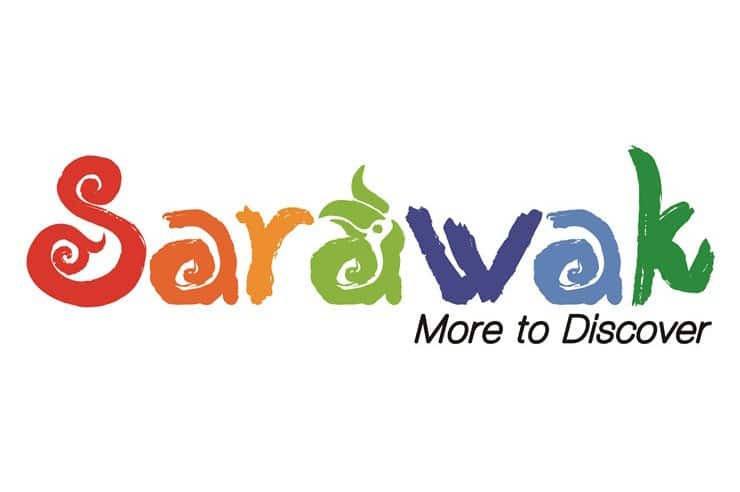




















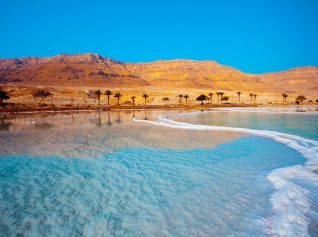

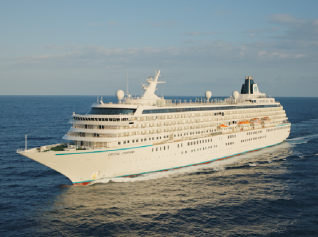

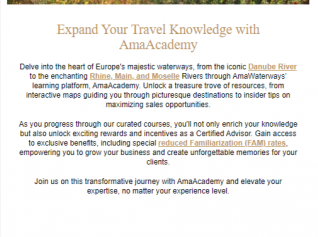





Dozens fall ill in P&O Cruises ship outbreak
Turkish Airlines flight in emergency landing after pilot dies
Boy falls to death on cruise ship
Unexpected wave rocks cruise ship
Storm Lilian travel chaos as bank holiday flights cancelled